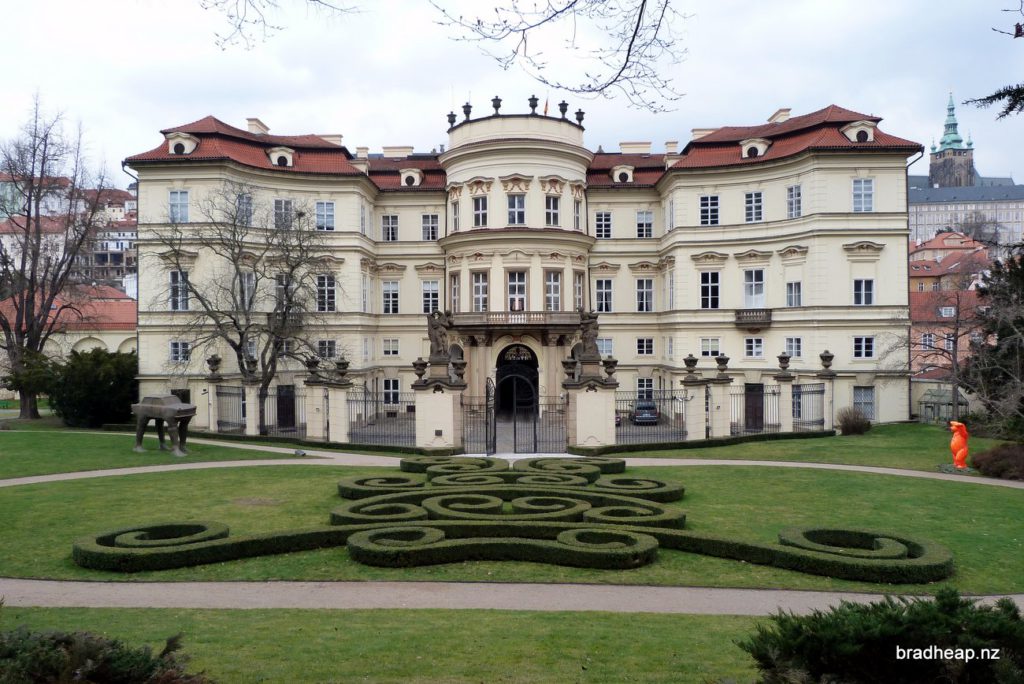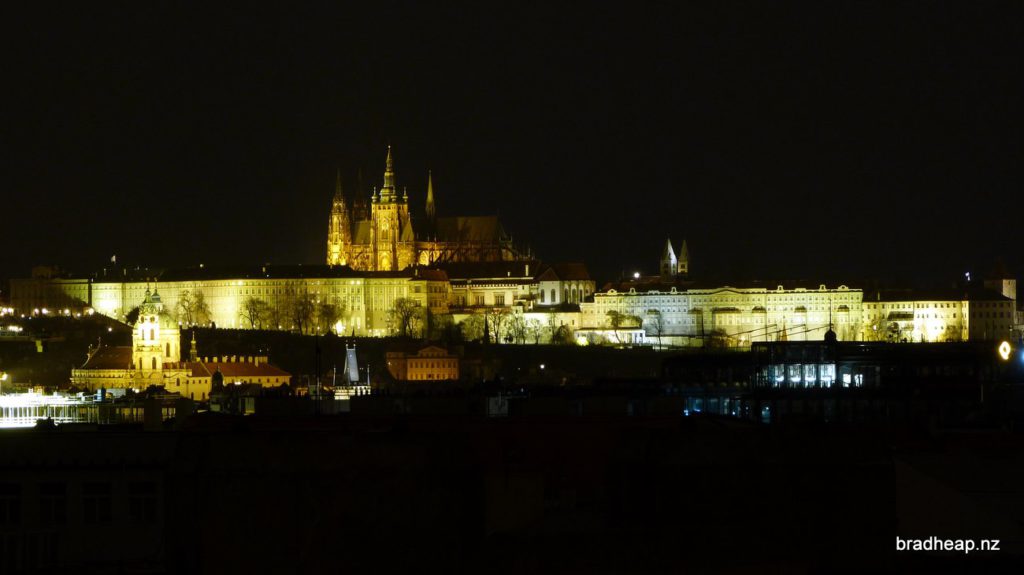I started my second day in Prague quite early so that I could (as my guidebook suggested) get to Prague Castle before all crowds. My friend (for reasons still unknown) decided that he didn’t want to go to Prague’s primary tourist attraction and instead went for a long walk along the river.
To get to Pražský hrad I caught the metro from Můstek Station to Malostranská station. Finding the entrance to Můstek Station was easy, however, finding the platforms and working the ticket machine was a whole different story. I’m sure that on any other day it would be simple, but on a sleepy Saturday morning it was one of the most difficult things I did on my entire trip. When I got to Malostranská station I was also a little lost, as I had assumed that the metro would have gotten me to the top of the hill that the castle was on, not the bottom.
After finding the path to the castle that meanders up the side of the hill I entered into the castle complex. The castle complex is unlike other palaces and castles that I’ve visited before, there isn’t one “castle” building, but instead a number of buildings and churches that make up the complex. As I kept walking through the narrow streets inside the complex I was confused about the lack of tourists, that was until I realised that I had walked in the rear entrance (my meandering path was really the Old Castle Steps) and once I got to the area around St Vitus Cathedral I was in among the hordes of tourists.







At the Third Gate I bought a ticket to enter many of the buildings and headed inside St Vitus Cathedral. Unlike other tourists, I wasn’t particularly overwhelmed by the cathedral, it was very similar to many other cathedrals across Europe. However, across the courtyard I found the Old Royal Palace much more fascinating with many little information boards explaining many events in Czech history that had happened inside the Palace’s walls. This included the room (and window) where the Second Defenestration of Prague happened which sparked the start of the Thirty Years’ War.
After taking a brief look inside the Basilica of St George I walked down to the Golden Lane which contains a series of old houses that have been built into the walls surrounding the castle complex. The museum of torture instruments was the most interesting part of the this area of the castle with many sets of armour on display covering a few hundred years of warfare.





By now it was almost midday, so I walked through to the main gate of the castle to watch the changing of the guard. The changing of the guard was a top quality show, and I can only called it that, a show. It went for almost 20 minutes and the precision of the performance was top notch.



Unfortunately for me, standing for over half an hour on a hill in the near zero degrees made me extremely cold. After the performance had finished I wandered along the nearby streets to find something to eat and tried to warm up over a cup of hot chocolate. After 45 minutes I decided to go back outside and explore the rest of the area around the castle.
From the area above the castle I walked across the top of the Strahovská zahrada (Large Strahov Garden) to Petřín hill. The main attraction at the top of Petřín hill is the Petřín Lookout Tower which from a distance looks like the top of the Eiffel Tower, however, up close it doesn’t look very impressive at all. The other attraction is the Funicular which I had considering using to get back to the main area of Prague but it was closed for repairs.



Instead I walked back through Strahovská zahrada to find the back garden of the German Embassy where the Quo Vadis (David Černý Sculpture) – a Trabant with four legs – is installed. From here I walked through the narrow streets of Malá Strana where I accidentally stumbled upon a Knights Hospitaller church, Kostel Panny Marie pod řetězem (Church of Our Lady beneath the Chain). Despite its much smaller size I found this church to be much more exciting that St Vitus Cathedral and a huge contrast between the wealth and political power that the Catholic church on the hill had held compared to the small church at the bottom which has cared for people for nearly 1,000 years.



Just around the corner from the Knights Hospitaller church I came across the Lennon Wall. Prague seems like a strange place to have a Beatles memorial but its history is tied to student activism and the fall of communism in the 1980s. At this point I been walking around outside for almost three hours and was feeling extremely cold again so I headed back to my hotel to relax for a few hours.
Finally, In the evening I went out and had another Goulash for dinner and wrapped up the day drinking Glühwein in the Old Town Square. At this point my culture-shocked feelings I had after my first day in Prague were gone, replaced by a love of history and wanting to know more about such a fascinating city.



